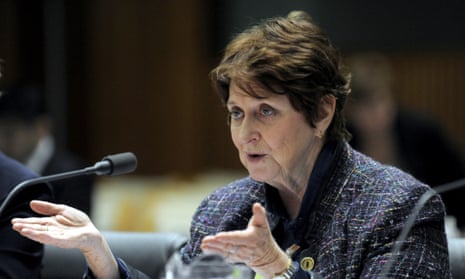In mid-1983 I received a phone call from Susan Ryan. Would I be interested, she asked me, in applying for the job of head of the Office of the Status of Women?
This was the women’s policy advice unit that had languished in low-status and non-powerful bureaucratic backwaters under the Fraser government, but which the newly elected Hawke government had given a boost in power and prestige by placing it within the top federal Department of Prime Minister and Cabinet.
OSW, as it became known, became Ryan’s vehicle for pursuing the agenda to improve women’s status – as we put it back in those days before “equality” became our preferred language – across a range of policy fronts.
Ryan was Labor’s first-ever woman cabinet minister.
She was in a hurry to implement a wide-ranging feminist agenda developed by women’s groups over the past decade and which the Hawke government seemed ready to embrace. I was proud to assist her in getting it done.
But our early euphoria quickly ran into the brutal realities of politics. Ryan had remarkable policy wins, they were often more hard won than is appreciated today, and seldom achieved without what were often excruciating compromises.
For instance, the Sex Discrimination Act of 1984 – which has rightly been singled out since Ryan’s unexpected and untimely death at the weekend as her signature achievement – was a pale shadow of the private member’s bill that Ryan had developed in opposition and used to popularise the notion of federal anti-discrimination legislation to her colleagues and the electorate.
The Hawke cabinet had not been prepared to accept its affirmative action provisions, unlike Labor’s caucus in opposition, and these were excised before its parliamentary debate.
Figuring out how to develop a separate affirmative action program to enhance women’s employment was the top priority Ryan handed me when I started at OSW.
The final Sex Discrimination Act bill contained multiple exemptions, leading many feminists and lawyers to criticise it as a toothless tiger that had conceded way too much to secure passage. It was easy to make this case.
The legislation when enacted contained two major exemptions – the Australian defence forces and paid maternity leave, the latter requiring a special dispensation from an international labour organisation convention – but scores of industries and interests also were allowed to continue on their merry misogynist and discriminatory ways.
These included the insurance and superannuation industries, private clubs, religious organisations, sports and schools.
Ryan had taken the pragmatic view that it was preferable to get basic anti-discrimination legislation in place and work to remove these exemptions over time.
Her strategy was vindicated: most of these exemptions are now gone. If American feminists had been similarly conciliatory, they might have won the Equal Rights Amendment – also fiercely opposed by the insurance industry. Instead, their purist stance means that almost 40 years on, the United States has no constitutional guarantee of women’s equality.
Australia, thanks to Susan Ryan, has legislation that, while far from perfect and certainly not adequately resourced by the federal government, provides a degree of protection.
Ryan’s 1984 legislation made sexual harassment unlawful, the first jurisdiction in the world to do so.
This landmark did not receive much attention at the time, overshadowed by the bigger achievement of the legislation itself.
It was only in 2019, when the #MeToo movement made sexual harassment a red-hot issue, that this pioneering aspect of Ryan’s legislation perhaps got the credit it deserved.
If passage of the Sex Discrimination Act required Ryan to battle against business interests and rightwing groups, who contended the legislation would destroy the family and wreak havoc in society, she had a different kind of opposition to other central policy objectives: her own cabinet colleagues.
Foremost among these was Peter Walsh, a senatorial colleague of Ryan’s who was finance minister and thus controller of the government’s purse-strings.
He was prepared to do battle to stop the massive increase in childcare spending that Bob Hawke had proposed in his campaign policy launch speech for the 1984 elections.
He also flatly refused to fund the agency that Ryan proposed to administer the affirmative action legislation.
This had passed with Hawke’s strong support. He had actually taken the almost unheard-of step of introducing the legislation in parliament himself.
Ryan dealt with her recalcitrant colleagues with humour and guile, but the odds were often stacked against her.
There were no other women around the cabinet table. Even prime ministerial support was no guarantee of victory, which perhaps was a marker of where women really stood on the totem pole back then.
Susan Ryan was there and we – women especially – owe her unreserved gratitude for being there. Often alone, always fighting.
